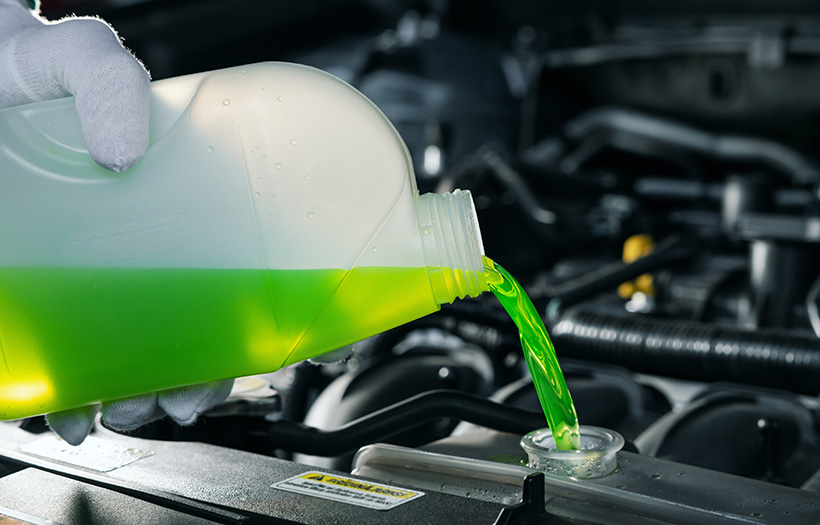Antifreeze Poisoning In Pets

With cold weather in full swing, one of the most common problems for pets and their owners is antifreeze poisoning. It is estimated that 90,000 pets a year are poisoned by ethylene glycol, the active ingredient in antifreeze. It is sweet to the taste and tempting for pets to ingest. Antifreeze, which is 95% ethylene glycol, is not the only source of this toxin. Others include windshield deicing agents, motor oil, hydraulic brake fluid, paints, solvents and less commonly found these days, photographic developing solutions. One tablespoon of antifreeze can cause severe, acute kidney failure in dog, and 5 tablespoons can kill a medium sized dog. For cats, 1 teaspoon can be fatal.
Symptoms of poisoning can be broken down into 3 stages:
Stage 1: This occurs 30 minutes to 12 hours after ingestion. Pets will be wobbly, have uncoordinated movements, a drunken walk, euphoria, nausea, drooling, vomiting, excessive thirst and urination, diarrhea and seizures.
Stage 2: At 12 to 24 hours the symptoms may resolve but more severe internal injury is occurring.
Stage 3: Acute kidney failure occurs in dogs 36 to 72 hours after ingestion and 12 to 24 hours in cats. Symptoms include lack of appetite, lethargy, drooling, uremic halitosis (urine odor to breath), depression, vomiting, seizures, coma and death.
The diagnosis is based on physical exam, history of exposure or possible exposure, blood profile and urinalysis. Laboratory testing can confirm the diagnosis but the results frequently take 2 days to get back and by that time, if treatment has not been initiated, it is too late. An in-hospital test is available but is only accurate if used within 4 hours of ingestion.
Initial treatment involves reducing absorption of ethylene glycol. If exposure has occurred within 2 hours, patients are induced to vomit with hydrogen peroxide or syrup of ipecac at home or with apomorphine in the veterinary hospital. If after contacting your veterinarian, you are told to induce vomiting at home, your pet should still go to the hospital to receive activated charcoal. This will bind the ethylene glycol in the intestine so less will be absorbed. The second half of treatment is to prevent the subsequent kidney damage.
Ethylene glycol becomes more toxic as it is broken down by the liver into other components. Secondary treatment involves giving a drug called fomepizole to prevent ethylene glycol breakdown in the liver. Ethylene glycol that is not metabolized by the liver, is excreted unchanged by the kidneys without injury. The treatment is expensive, but lifesaving, when administered in the first 8 to 12 hours for dogs and 3 hours for cats. After this time, ethylene glycol poisoning is almost 100% fatal without expensive dialysis. The sooner treatment is initiated the better the outcome will be.
As with many things, prevention is the key. Antifreeze poisoning can be avoided with a few easy steps.
- Take care not to spill antifreeze, if you do, clean it up immediately and thoroughly.
- Keep containers tightly sealed and safely stored.
- Properly dispose of old, used antifreeze in proper containers and dispose of empty containers.
- Check the vehicle radiator regularly and repair leaks immediately.
- Do not allow dogs and cats to wander unattended near roads, gutters, garages and driveways.
- Look for antifreeze containing propylene glycol. It is safer for pets.
U.S. manufacturers of antifreeze and engine coolants are now voluntarily adding a bittering agent (denatonium benzoate) to their products the help discourage pets, wildlife and children from ingesting the sweet tasting liquid.
